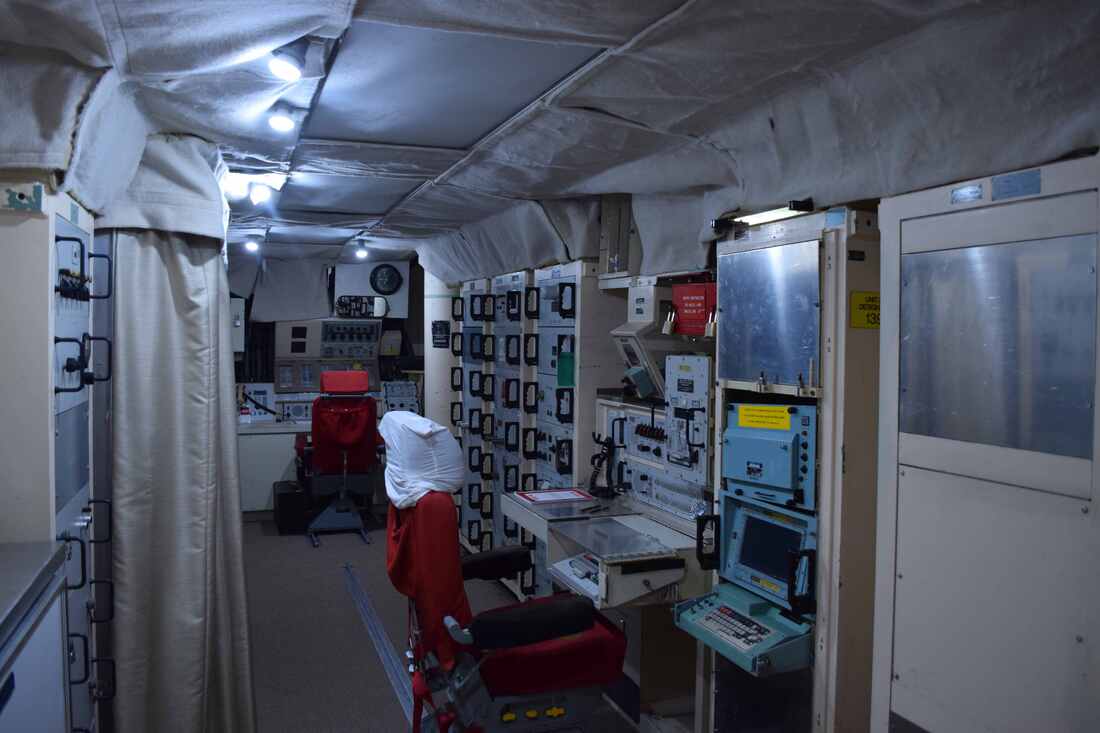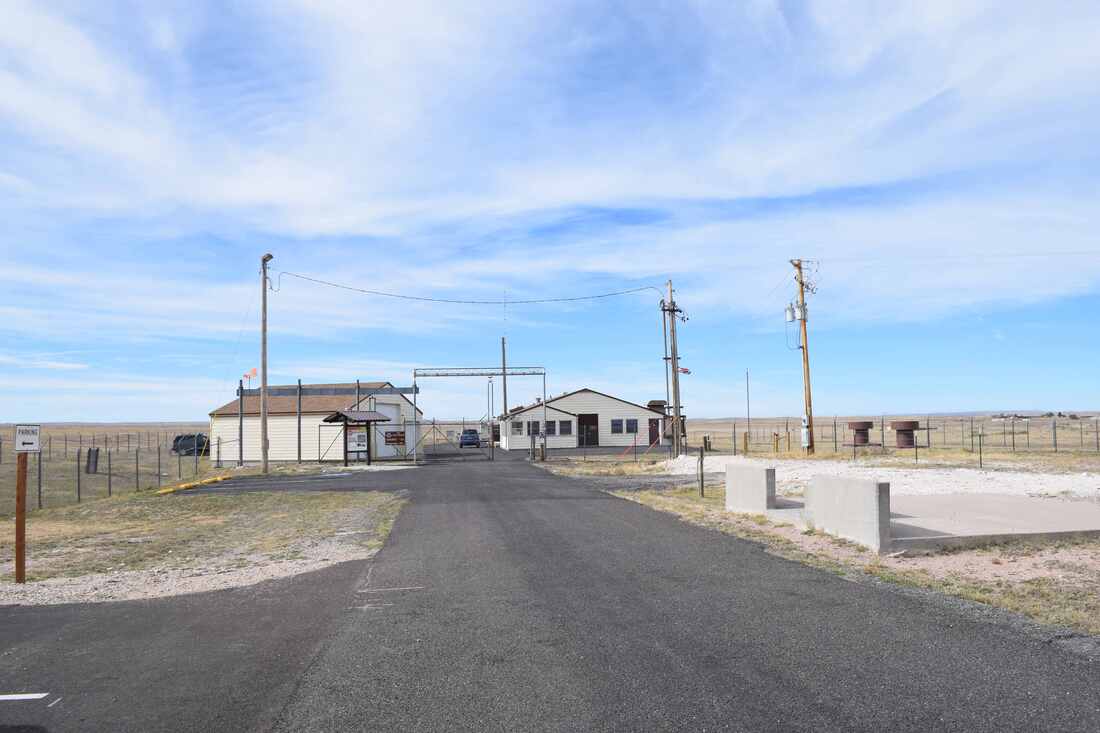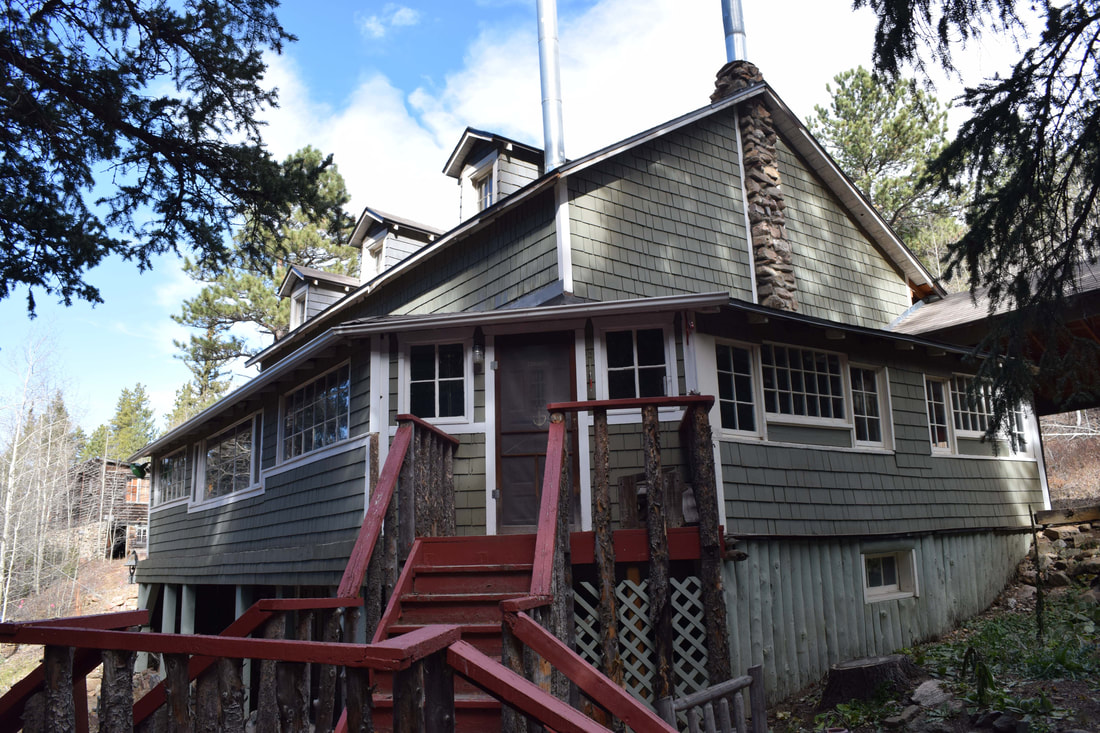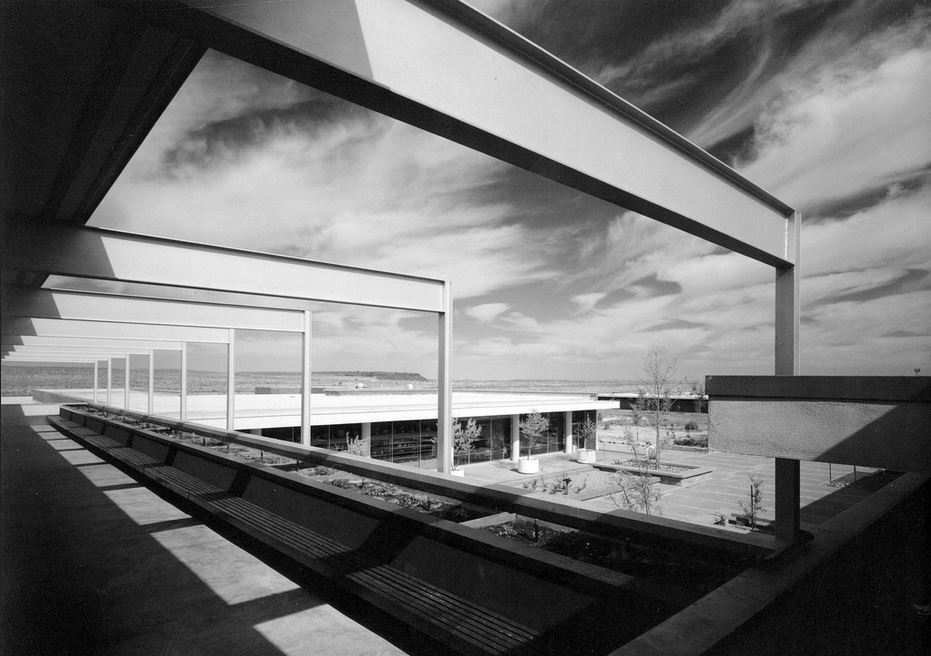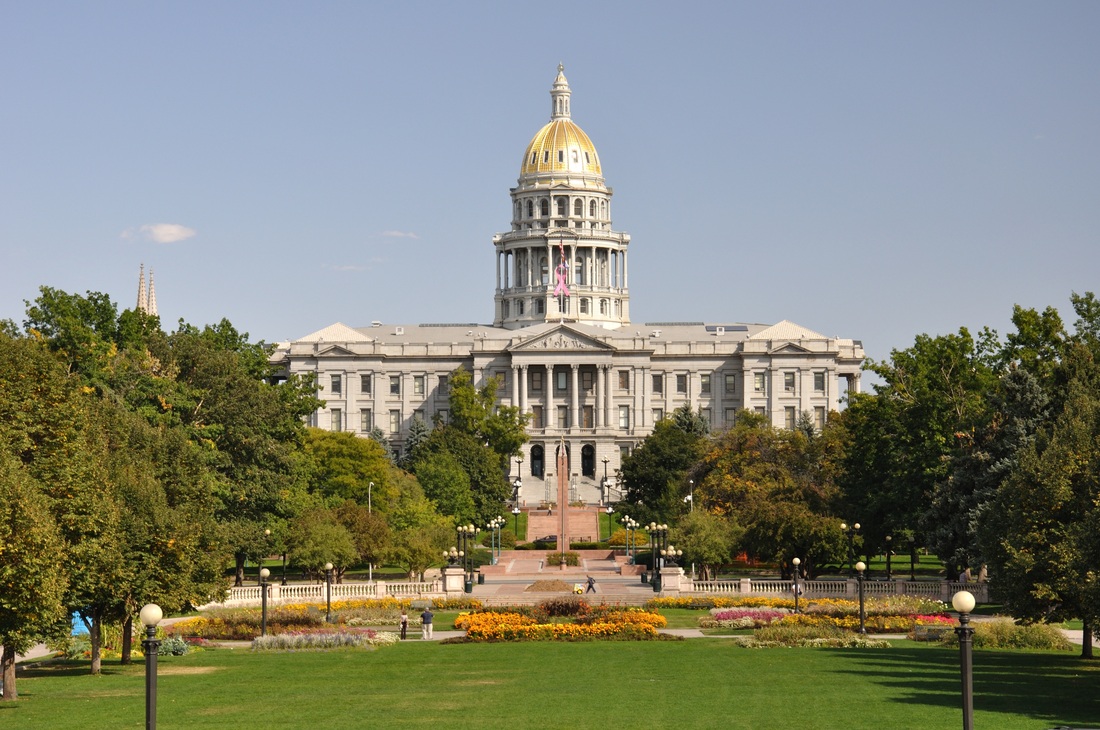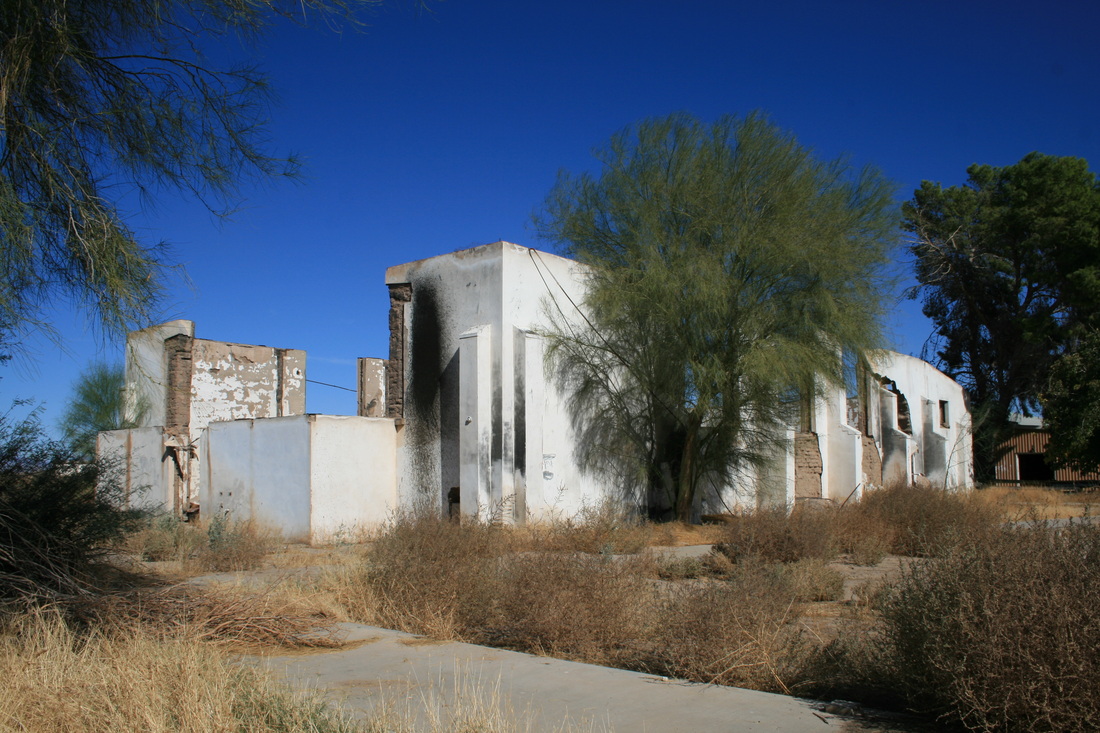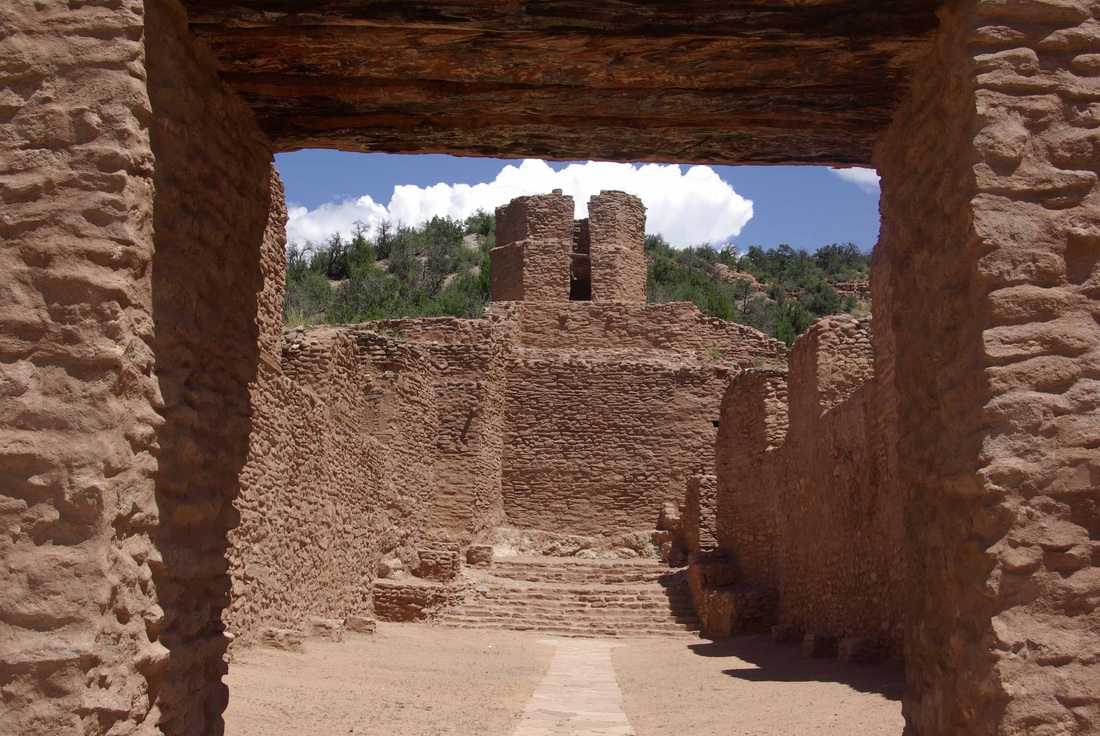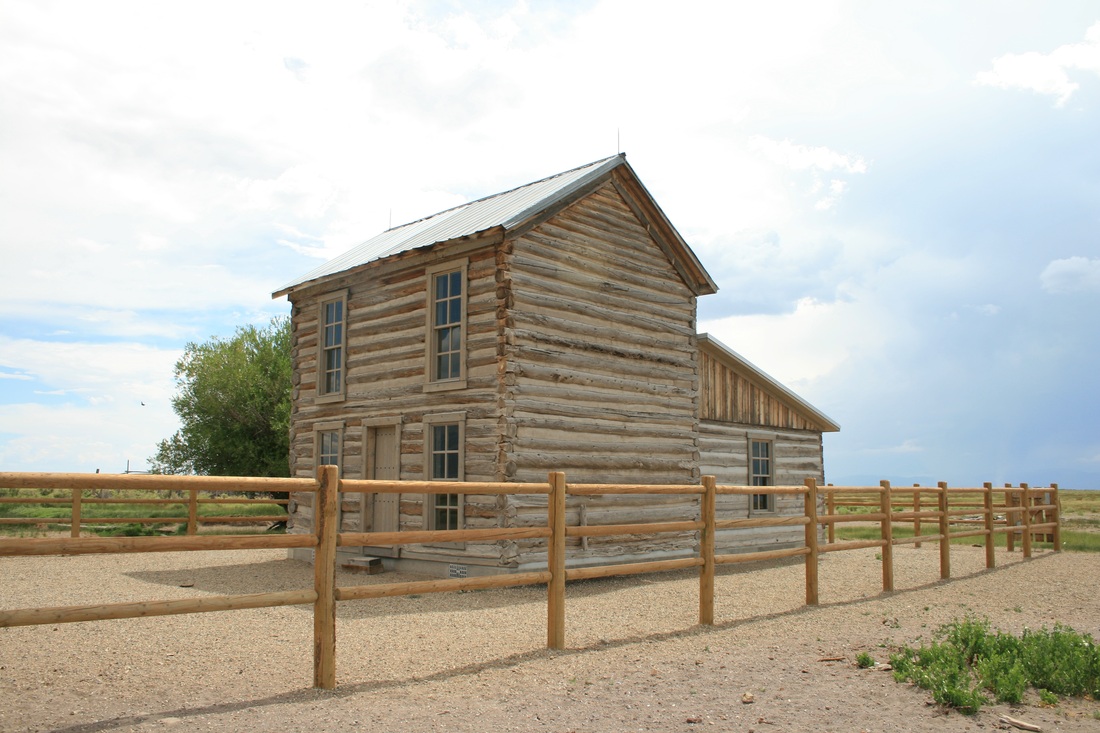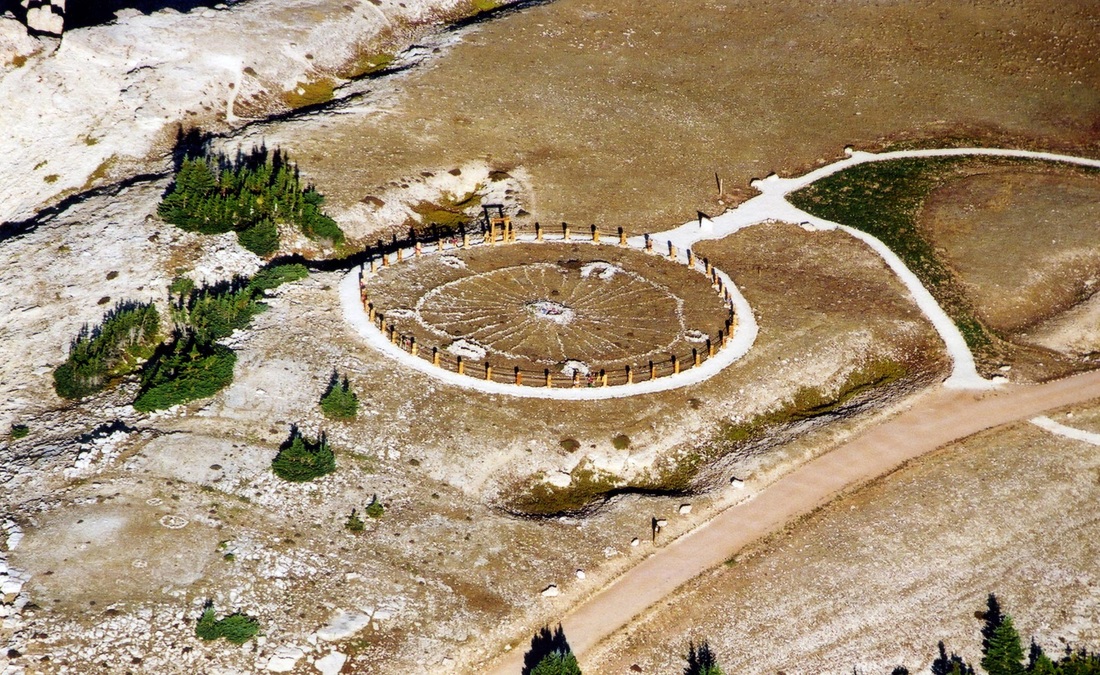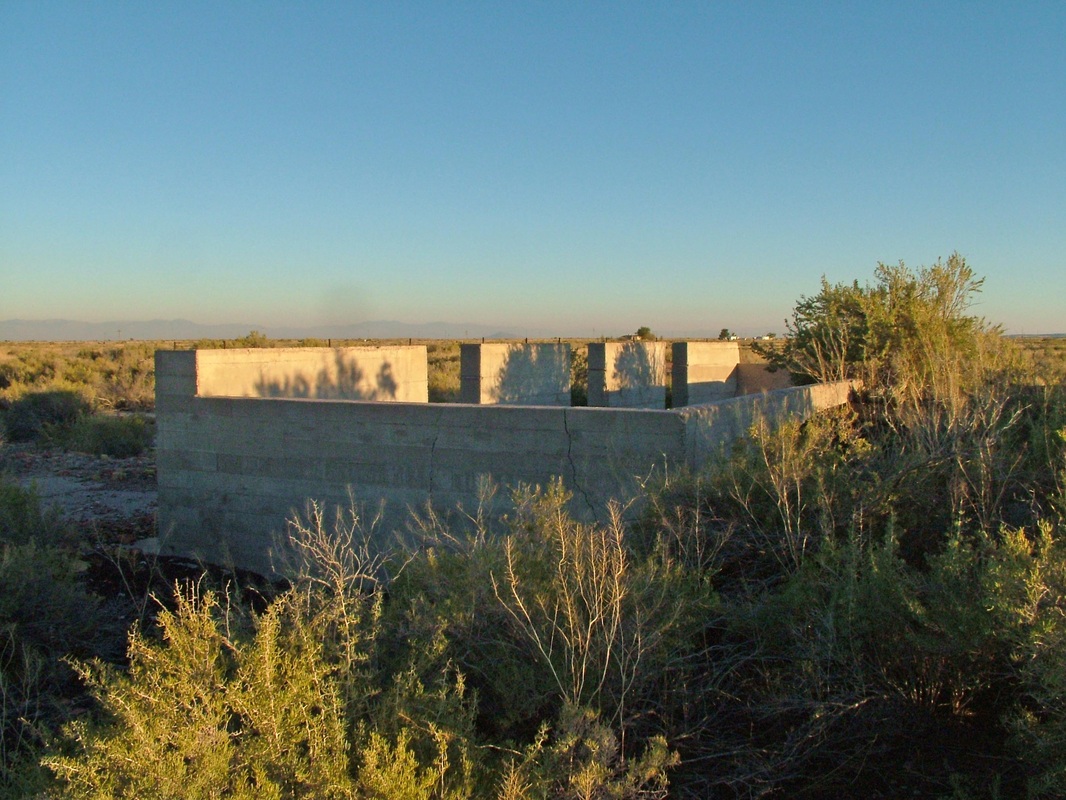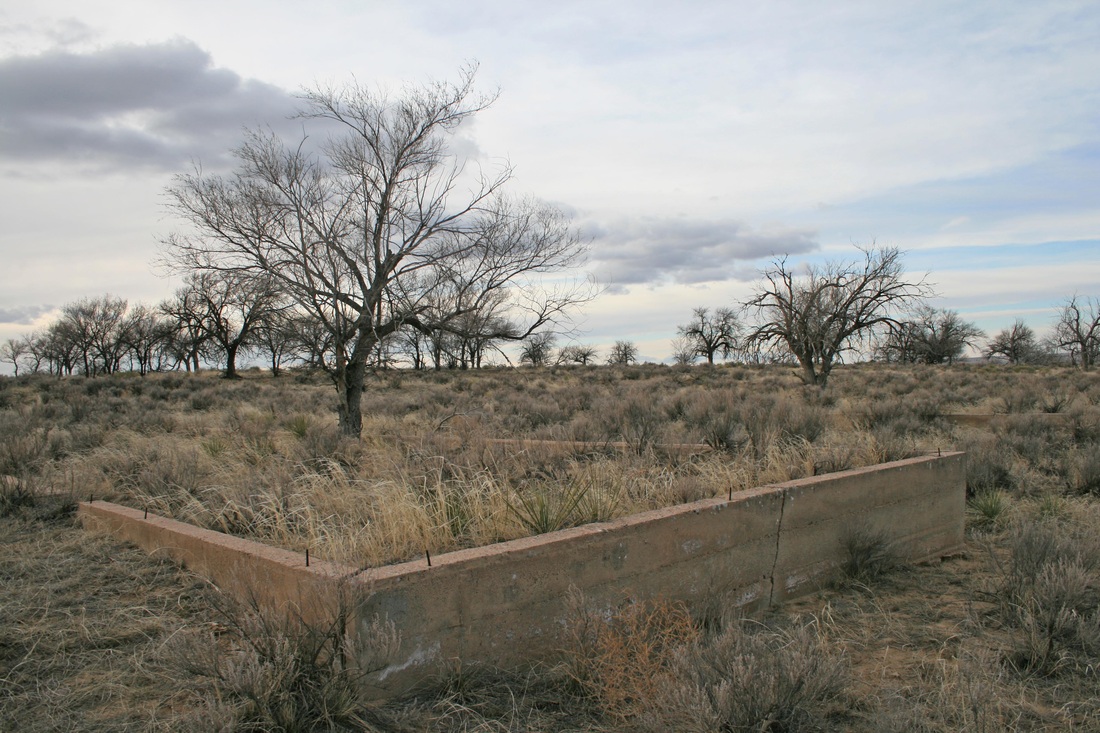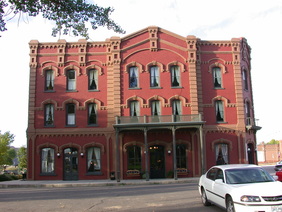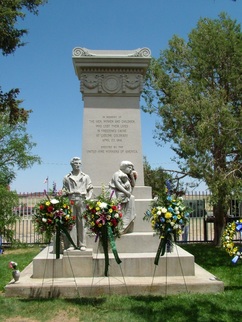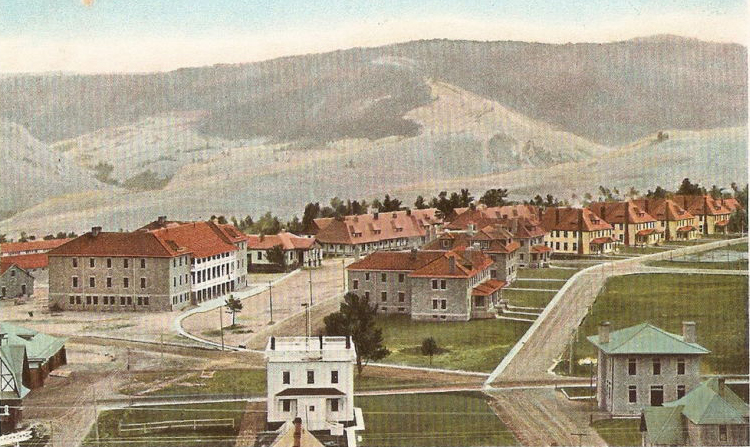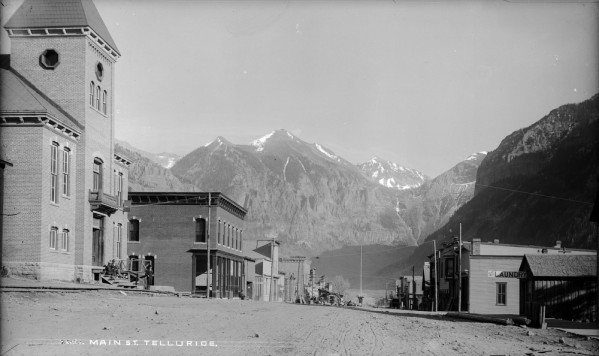National Historic Landmarks
National Historic Landmarks (NHLs) are properties with a national level of significance. Of the 87,000-plus properties listed in the National Register just over 2,600 (about 3 percent) are NHLs. Front Range has completed 19 NHLs. Established in 1935, the National Historic Landmarks Program is administered by the National Park Service on behalf of the Secretary of the Interior. The agency works with preservation officials, private property owners, and other partners interested in nominating properties for National Historic Landmark designation. Completed nominations are reviewed by the National Park System Advisory Board, which makes recommendations for designation to the Secretary of the Interior. If selected, property ownership remains the same, but each site receives a designation letter and is eligible for technical preservation advice. Front Range has also produced NHL letters of inquiry/briefing statements, which enable the National Park Service to gauge a property's potential eligibility prior to preparation of a full nomination.
NHL Nominations
Quebec 01 Missile Launch Control Facility, Laramie County, Wyoming (2019-23). The Quebec 01 Missile Launch/Missile Alert Facility is a nationally significant Cold War resource that was constructed in 1964 to controlled ten Minuteman IB missiles in underground launch facilities (silos) miles distant. The site is located adjacent to Interstate 25 on the high plains of Wyoming, about 29 miles north of Cheyenne. Quebec 01 later controlled Minuteman III missiles and is the only extant LCF associated with the Peacekeeper missile. The weapons controlled by Quebec 01 played an important role in the US Cold War arsenal. Pictured above is the underground Launch Control Capsule; below is the topside support buildings, communication antennas, and security fences. The nomination was prepared for Wyoming Parks, Historic Sites and Trails and the National Park Service. Following decommissioning of the latter missile in 2005, Quebec 01 eventually became a Wyoming State Park. Designated in December 2023.
Click on the link below for the visitor introduction video:
wyoparks.wyo.gov/index.php/news-updates-quebec01/1481-quebec-01-missile-alert-facility-introduction-video
Click on the link below for the visitor introduction video:
wyoparks.wyo.gov/index.php/news-updates-quebec01/1481-quebec-01-missile-alert-facility-introduction-video
Wink's Panorama, Gilpin County, Colorado (2018-23). Wink’s Panorama (also known as Wink’s Lodge) is nationally significant for its association with African American history as a rare Rocky Mountain destination for Black travelers seeking a mountain recreational experience during the era of segregation, when travel was challenging and potentially dangerous. Situated twenty-eight miles northwest of Denver on a forested mountainside at an elevation of nearly 8,300’, Wink’s served as a Colorado vacation accommodation and the focal point of the 1925 African American summer vacation home development of Lincoln Hills. The property possesses national significance for the role it played in the areas of Entertainment/Recreation and Social History from its completion circa 1928-34 to 1965.
Obrey Wendell “Wink” Hamlet (1892-1965), an African American wood, coal, and moving business entrepreneur in Denver’s Five Points neighborhood, completed the Rustic stone and wood shingle lodge circa 1928-34, using on-site timber and stone, as well as salvaged materials brought from the city. The lodge stands as a testament to Hamlet’s hard work in carving out a niche in the hospitality industry during the Jim Crow era. Obrey Hamlet was an enterprising, but not wealthy, individual. He saw an opportunity and built the lodge while working as a service station attendant in Denver. In addition to the six-unit, one-and-a-half-story Rustic-style lodge, Hamlet also erected, or acquired, a number of small, detached cabins in the development that he also rented to guests. Hamlet’s wives, first Naomi and, following her death in 1951, Melba, played integral roles in the May to September operation of the lodge, cooking delicious meals, assisting with reservations, doing laundry, and preparing guest rooms. The nomination was prepared for Lincoln Hills Cares in cooperation with the National Park Service. Designated in December 2023.
Obrey Wendell “Wink” Hamlet (1892-1965), an African American wood, coal, and moving business entrepreneur in Denver’s Five Points neighborhood, completed the Rustic stone and wood shingle lodge circa 1928-34, using on-site timber and stone, as well as salvaged materials brought from the city. The lodge stands as a testament to Hamlet’s hard work in carving out a niche in the hospitality industry during the Jim Crow era. Obrey Hamlet was an enterprising, but not wealthy, individual. He saw an opportunity and built the lodge while working as a service station attendant in Denver. In addition to the six-unit, one-and-a-half-story Rustic-style lodge, Hamlet also erected, or acquired, a number of small, detached cabins in the development that he also rented to guests. Hamlet’s wives, first Naomi and, following her death in 1951, Melba, played integral roles in the May to September operation of the lodge, cooking delicious meals, assisting with reservations, doing laundry, and preparing guest rooms. The nomination was prepared for Lincoln Hills Cares in cooperation with the National Park Service. Designated in December 2023.
Rio Vista Bracero Reception Center, Socorro, Texas (2019-23). The Rio Vista Bracero Reception Center in Socorro, Texas, southeast of El Paso, is nationally significant in the areas of Social History, Government/Politics, and Agriculture. In particular it is significant for Immigration and Emigration Policies, for its 1951-64 association with the Mexican Farm Labor Program, the “largest single temporary alien worker program” ever undertaken by the United States. The program significantly impacted documented and undocumented Mexican immigration to the United States in the post-World War II era and beyond. As historian Deborah Cohen points out: “Even though the bracero program formally ended virtually 50 years ago the U.S.-Mexican economy remains predicated on labor migration built around ties and knowledge from this earlier period.”
Braceros played a vitally important role in the nation’s agricultural economy in the postwar era, comprising nearly a quarter of US agricultural workers by 1959. The program greatly enhanced the profitability of the US agribusiness sector, providing a steady, reliable supply of highly-skilled farmworkers at relatively low wages and permitting expansion of certain crop sectors. The laborers were known as braceros (only men were eligible for the program), a term derived from the Spanish word brazo for arm, and the bilateral administrative framework developed by the United States and Mexico in 1951 was referred to as the bracero program. Given the scale of the bracero program, its joint administration by both nations, and the impact it had on immigration from Mexico to the United States, the Rio Vista site arguably possesses trans-national significance. The project was undertaken for the City of Socorro, the National Trust, and the National Park service. Designated in December 2023.
Braceros played a vitally important role in the nation’s agricultural economy in the postwar era, comprising nearly a quarter of US agricultural workers by 1959. The program greatly enhanced the profitability of the US agribusiness sector, providing a steady, reliable supply of highly-skilled farmworkers at relatively low wages and permitting expansion of certain crop sectors. The laborers were known as braceros (only men were eligible for the program), a term derived from the Spanish word brazo for arm, and the bilateral administrative framework developed by the United States and Mexico in 1951 was referred to as the bracero program. Given the scale of the bracero program, its joint administration by both nations, and the impact it had on immigration from Mexico to the United States, the Rio Vista site arguably possesses trans-national significance. The project was undertaken for the City of Socorro, the National Trust, and the National Park service. Designated in December 2023.
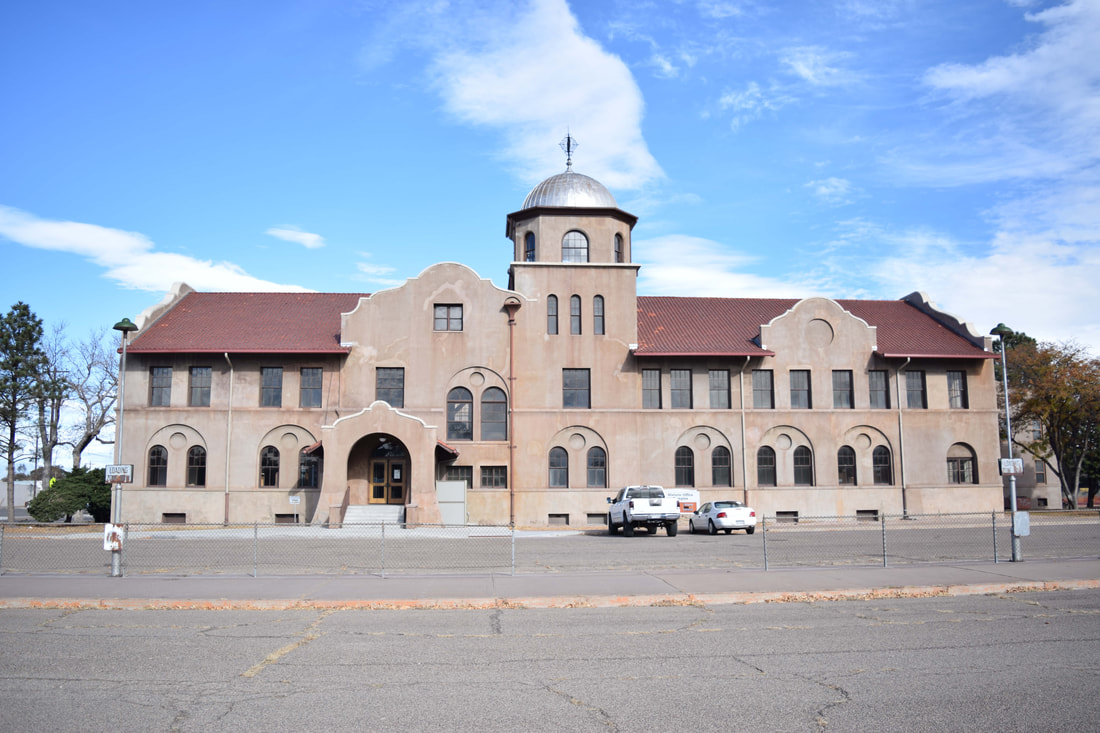
Colorado Fuel and Iron Company Administrative Complex, Pueblo, Colorado (2018-20). The administrative complex served as the operational headquarters for the Colorado Fuel and Iron Company (CF&I), a firm formed in 1892 that played an influential role in the development of the American economy through industrial extraction and production in the early twentieth century as the Trans-Mississippi West’s pioneer steelmaker and its principal coal and coke enterprise. Managers, engineers, and clerical staff within the administrative complex oversaw the day to day administration of Colorado Fuel and Iron’s multi-state industrial empire, including operating a steel and iron plant in Pueblo (completed in 1882 and comprising the nation’s first, fully integrated steel manufacturing facility west of St. Louis, a position it retained until 1942); overseeing coal, iron, and limestone mines and coke ovens in Colorado, Wyoming, New Mexico, Utah, and Oklahoma; directing the flow of eastern capital to developing western natural resources and industrial capacity, particularly through the involvement of the Rockefeller family who controlled the company from 1907 to 1944; and implementing the firm’s 1915 Employee Representation Plan, which impacted workers and work culture and stimulated the adoption of hundreds of similar measures throughout the country in the 1910s and 1920s. Designated January 2021.
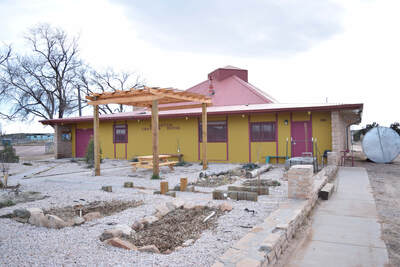
Klagetoh Chapter House, Navajo Nation, Apache County, Arizona (2015-20). The Klagetoh Chapter House on the Navajo Nation in northeast Arizona is significant for its association with Navajo political leader and public health advocate Annie Dodge Wauneka, the chapter house was constructed in 1964 and employs native sandstone quarried near by. Wauneka gained election to the Navajo Tribal Council in 1951 and served in that body until 1979. In the 1950s, she led the Navajo effort to combat an epidemic of tuberculosis on the reservation and gained national attention and praise for her advocacy on public health matters. Wauneka was awarded the Presidential Medal of Freedom in December 1963. During the 2020 Covid pandemic, the chapter house served as a testing and supply distribution site. The project was undertaken by Front Range for the National Collaborative for Women's History Sites. Designated January 2021.
|
Painted Desert Community Complex, Apache County, Arizona (2015-16). The National Park Service selected Front Range to prepare a National Historic Landmark nomination for the Painted Desert Community Complex at Petrified Forest National Park in northeastern Arizona. Master architects Richard Neutra and Robert Alexander designed the 1960s multi-building complex, including a visitor center, school, employee quarters, and other buildings as part of the Park Service's Mission 66 program. Amanda Wallander of CSU/CEMML and Rodd Wheaton assisted in preparation with the project. The Landmarks Committee approved the nomination in October 2016. Approved January 2017.
|
|
Lake Hotel, National Historic Landmark Nomination, Yellowstone National Park, Wyoming. (2012-14). Front Range prepared a National Historic Landmark nomination for this grand resort hotel located on the north shore of Yellowstone Lake in the nation's oldest national park. Initially built in 1891, architect Robert C. Reamer redesigned the hotel in a Western adaptation of the Colonial Revival style in 1903-04. Approved by the Landmarks Committee in May 2014 and Advisory Board in October 2014. Approved April 2015.
|
|
Denver Civic Center, City and County of Denver, Colorado, National Historic Landmark Nomination (2009-12)
A National Historic Landmark nomination was prepared by Front Range for the Denver Civic Center, a City Beautiful-era grouping of buildings, designed landscapes, monuments, and art. The 33-acre district extends from the Colorado State Capitol on the east to the Denver City and County Building on the west. The project was performed for Historic Denver, Inc. under a grant from the State Historical Fund. Approved October 2012. |
|
Colorado River War Relocation Center (Poston), National Historic Landmark Nomination, Parker, Arizona vicinity (2008-11)
Front Range prepared a National Historic Landmark nomination for a portion of the former Colorado River War Relocation Center near Parker, Arizona, where more than 17,000 Japanese Americans--mostly from California--were relocated during World War II. The nomination is centered on the adobe buildings at the Poston I elementary school site. Front Range performed the work for the National Park Service under contract to the Yuma Crossing National Heritage Area Corporation. Approved October 2012. |
|
San Jose de los Jemez Mission and Giusewa Pueblo National Historic Landmark Nomination, Sandoval County, New Mexico (2009-11)
The National Park Service and New Mexico Monuments engaged Front Range to prepare a National Historic Landmark nomination for the remains of a circa-1620s Spanish Colonial mission and a 1500s pueblo at Jemez State Monument. Approved October 2012. |
|
Trujillo Homesteads NHL, Alamosa County, Colorado (2011-12)
Front Range, in collaboration with archaeologist Marilyn Martorano of RMC Consultants, prepared a National Historic Landmark district nomination for the Teofilo Trujillo and Pedro Trujillo Homesteads west of the Great Sand Dunes National Park and Preserve in northern Alamosa County. Teofilo (Pedro's father) settled in the area about 1865, built an adobe dwelling, and increasingly emphasized sheep raising. His son, Pedro, focused on cattle and horses and built this two-story log house. Conflict with Anglo cattle interests led to the destruction of Teofilo's house in 1902 and the sale of the family's land holdings. Approved as an NHL in 2012. |
|
Medicine Mountain, Big Horn County, Wyoming (2010-11)
The 4,080-acre Medicine Mountain NHL is located in north central Wyoming in the Bighorn National Forest and contains the Bighorn Medicine Wheel and other archeological resources. Front Range prepared this nomination for the U.S. Forest Service using previous ethnographic studies. Medicine Mountain encompasses a set of significant cultural features that express a broad and longstanding spiritual and cultural tradition that continues to the present day. It became the first traditional cultural place approved as an NHL in 2011. |
|
Granada Relocation Center (Camp Amache), Prowers County, Colorado (2006)
Camp Amache in southeast Colorado housed Japanese Americans relocated from the west coast during World War II. The camp operated from 1942 to 1945. The 1994 National Register district nomination prepared by Front Range was edited and updated by NPS staff Diane Bell, Greg Kendrick, and Kara Miyagishima. Approved in 2006. |
|
Fort Yellowstone National Historic Landmark, Yellowstone National Park, Wyoming (1999-2000)
The U.S. Army reservation and administrative headquarters of Yellowstone National Park. The nomination focused on the important role the Army played in the early history of Yellowstone National Park. Approved as an NHL in 2002. |
Letters of Inquiry/Briefing Statements

Colorado Fuel and Iron Administrative Complex, National Historic Landmark Briefing Statement, Pueblo, Colorado (2013-14).
Front Range prepared a National Historic Landmark briefing statement for the former administrative offices of the Colorado Fuel and Iron Company. CF&I was a pioneer steelmaker in the western United States, a major Rocky Mountain coal producer, and notable for developing an Employee Representation Plan with its workers. The Bessemer Historical Society sponsored the effort.
Front Range prepared a National Historic Landmark briefing statement for the former administrative offices of the Colorado Fuel and Iron Company. CF&I was a pioneer steelmaker in the western United States, a major Rocky Mountain coal producer, and notable for developing an Employee Representation Plan with its workers. The Bessemer Historical Society sponsored the effort.
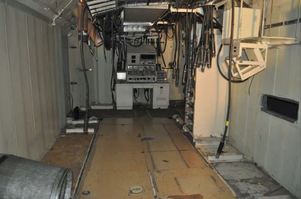
Quebec-1 Missile Alert Facilitiy, Laramie County, Wyoming (2017-18)
The National Park Service and the Wyoming SHPO engaged Front Range to produce a National Historic Landmark Letter of Inquiry (LOI) for the former Quebec-1 Missile Alert Facility (MAF) north of Cheyenne, Wyoming. Constructed as a Minuteman missile control facility in the 1960s, the underground bunker became part of the MX/Peacekeeper ICBM program in 1986. The Peacekeeper played an important role in the later years of the Cold War as part of the U.S. nuclear arsenal. It was decommissioned in 2005. The LOI explored the significance of the site and discussed criteria under which it might qualify as a National Historic Landmark. The underground launch control center is shown above (Source: Historic Structure Report).
The National Park Service and the Wyoming SHPO engaged Front Range to produce a National Historic Landmark Letter of Inquiry (LOI) for the former Quebec-1 Missile Alert Facility (MAF) north of Cheyenne, Wyoming. Constructed as a Minuteman missile control facility in the 1960s, the underground bunker became part of the MX/Peacekeeper ICBM program in 1986. The Peacekeeper played an important role in the later years of the Cold War as part of the U.S. nuclear arsenal. It was decommissioned in 2005. The LOI explored the significance of the site and discussed criteria under which it might qualify as a National Historic Landmark. The underground launch control center is shown above (Source: Historic Structure Report).
